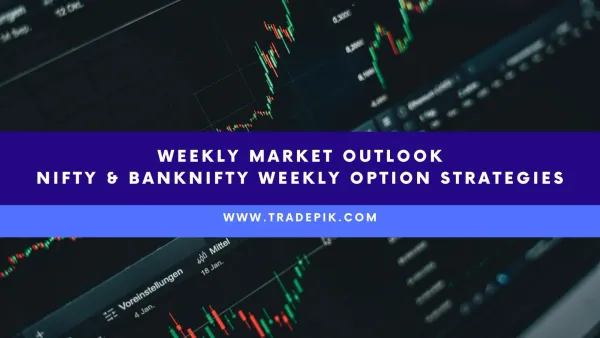Demystifying Option Greeks: A Practical Guide for Indian Traders
Learn about option Greeks and how to use them to manage risk and create profitable option trading strategies.

Option Greeks are the variables that measure the sensitivity of option prices to changes in underlying asset prices, volatility, time to expiration, interest rates, and dividends. They are named after Greek letters, and each Greek measures a different aspect of option pricing.
Option Greeks are important for Indian traders because they can be used to manage risk and improve trading performance. By understanding how option Greeks work, traders can make more informed decisions about when to buy or sell options, and how to size their positions.
There are six main types of option Greeks:
- Delta: Delta measures the change in option price for a one-unit change in the underlying asset price.
- Gamma: Gamma measures the rate of change of delta with respect to the underlying asset price.
- Theta: Theta measures the change in option price for a one-day decrease in time to expiration.
- Vega: Vega measures the change in option price for a one-unit increase in implied volatility.
- Rho: Rho measures the change in option price for a one-percent increase in interest rates.
- SVI: SVI is a measure of implied volatility that takes into account the skew and kurtosis of the underlying asset's implied volatility surface.
In the following sections, we will discuss each of these Greeks in more detail.
Delta: Directional Sensitivity

Delta is the most important option Greek for option buyers. It measures the change in option price for a one-unit change in the underlying asset price. For example, if a call option has a delta of 0.5, then its price will increase by ₹0.50 for every ₹1 increase in the underlying asset price.
Delta is important for option buyers because it tells them how much their option price will change if the underlying asset price changes. This information can be used to manage risk and to make informed decisions about when to exercise an option.
For example, if an option buyer has a long call option with a delta of 0.5, and the underlying asset price increases by ₹1, then the option buyer's profit will increase by ₹0.50. This is because the option price will increase by ₹0.50, and the option buyer will be able to exercise the option and buy the underlying asset for the strike price, which is now ₹1 below the market price.
Delta is also important for option sellers. It tells them how much their option price will decrease if the underlying asset price changes. This information can be used to manage risk and to make informed decisions about when to close an option position.
For example, if an option seller has a short call option with a delta of 0.5, and the underlying asset price increases by ₹1, then the option seller's loss will increase by ₹0.50. This is because the option price will decrease by ₹0.50, and the option seller will be obligated to sell the underlying asset for the strike price, which is now ₹1 above the market price.
Delta is a dynamic measure, which means that it changes as the underlying asset price changes. This is because the option price is constantly being re-priced to reflect changes in the market. As a result, option buyers and sellers need to monitor delta closely to ensure that they are managing their risk effectively.
Gamma: Accelerated Sensitivity

Gamma measures the rate of change of delta with respect to the underlying asset price. For example, if a call option has a gamma of 0.1, then its delta will increase by 0.1 for every ₹1 increase in the underlying asset price.
Gamma is important for option traders because it tells them how much their delta will change if the underlying asset price changes. This information can be used to manage risk and to make informed decisions about when to trade options.
For example, if an option trader has a long call option with a gamma of 0.1, and the underlying asset price increases by ₹1, then the option trader's delta will increase by 0.1. This means that the option trader's profit or loss will increase by 10% if the underlying asset price continues to increase.
Gamma is a dynamic measure, which means that it changes as the underlying asset price changes. This is because the option price is constantly being re-priced to reflect changes in the market. As a result, option traders need to monitor gamma closely to ensure that they are managing their risk effectively.
Gamma is often used in conjunction with delta to create option trading strategies. For example, a trader might buy a call option with a high gamma and a low delta to create a strategy that profits from a large move in the underlying asset price in either direction.
Gamma is also an important consideration for option sellers. Sellers need to be aware of the gamma of their positions in order to manage their risk effectively. For example, a seller of a call option with a high gamma will need to be prepared for a large increase in the option price if the underlying asset price moves up.
Gamma is a powerful tool that can be used to manage risk and to create profitable option trading strategies. However, it is important to understand how gamma works before using it in your trading.

Theta: Time Decay's Impact

Theta measures the change in option price for a one-day decrease in time to expiration. For example, if a call option has a theta of -0.02, then its price will decrease by ₹0.02 for every day that passes.
Theta is important for option traders because it tells them how much their option price will decrease as time passes. This information can be used to manage risk and to make informed decisions about when to trade options.
For example, if an option trader has a long call option with a theta of -0.02, and the underlying asset price is expected to remain unchanged, then the option trader's profit will decrease by ₹0.02 for every day that passes. As a result, the option trader may want to close the position before time expires in order to avoid further losses.
Theta is also important for option sellers. Sellers need to be aware of the theta of their positions in order to manage their risk effectively. For example, a seller of a call option with a high theta will need to be prepared for a large decrease in the option price as time passes.
Theta is a powerful tool that can be used to manage risk and to create profitable option trading strategies. However, it is important to understand how theta works before using it in your trading.
Here are some additional things to keep in mind about theta:
- Theta is always negative for long options and positive for short options.
- Theta increases as the option approaches expiration.
- Theta is higher for at-the-money options than for in- or out-of-the-money options.
- Theta can be used to create option trading strategies that profit from time decay.
Vega: Volatility's Influence

Vega measures the change in option price for a one-unit increase in implied volatility. For example, if a call option has a vega of 0.1, then its price will increase by ₹0.10 for every 1% increase in implied volatility.
Vega is important for option traders because it tells them how much their option price will change if implied volatility changes. This information can be used to manage risk and to make informed decisions about when to trade options.
For example, if an option trader has a long call option with a vega of 0.1, and implied volatility increases by 1%, then the option trader's profit will increase by ₹0.10. This is because the option price will increase by ₹0.10, and the option trader will be able to exercise the option and buy the underlying asset for the strike price, which is now ₹0.10 below the market price.
Vega is also important for option sellers. It tells them how much their option price will decrease if implied volatility changes. This information can be used to manage risk and to make informed decisions about when to close an option position.
For example, if an option seller has a short call option with a vega of 0.1, and implied volatility increases by 1%, then the option seller's loss will increase by ₹0.10. This is because the option price will decrease by ₹0.10, and the option seller will be obligated to sell the underlying asset for the strike price, which is now ₹0.10 above the market price.
Vega is a dynamic measure, which means that it changes as implied volatility changes. This is because the option price is constantly being re-priced to reflect changes in the market. As a result, option buyers and sellers need to monitor vega closely to ensure that they are managing their risk effectively.
Vega is often used in conjunction with other option Greeks, such as delta, to create option trading strategies that profit from changes in implied volatility. For example, a trader might buy a call option with a high vega and a low delta to create a strategy that profits from an increase in implied volatility.
Vega is a powerful tool that can be used to manage risk and to create profitable option trading strategies. However, it is important to understand how vega works before using it in your trading.
Here are some additional things to keep in mind about vega:
- Vega is always positive for both long and short options.
- Vega increases as the option's expiration date approaches.
- Vega is higher for at-the-money options than for in- or out-of-the-money options.
- Vega can be used to create option trading strategies that profit from changes in implied volatility.

I hope this helps!
Rho: Desimplify Interest rate

Rho measures the change in option price for a one-percent increase in interest rates. For example, if a call option has a rho of 0.1, then its price will increase by ₹0.10 for every 1% increase in interest rates.
Rho is important for option traders because it tells them how much their option price will change if interest rates change. This information can be used to manage risk and to make informed decisions about when to trade options.
For example, if an option trader has a long call option with a rho of 0.1, and interest rates increase by 1%, then the option trader's profit will increase by ₹0.10. This is because the option price will increase by ₹0.10, and the option trader will be able to exercise the option and buy the underlying asset for the strike price, which is now ₹0.10 cheaper than the market price.
Rho is also important for option sellers. It tells them how much their option price will decrease if interest rates change. This information can be used to manage risk and to make informed decisions about when to close an option position.
For example, if an option seller has a short call option with a rho of 0.1, and interest rates increase by 1%, then the option seller's loss will increase by ₹0.10. This is because the option price will decrease by ₹0.10, and the option seller will be obligated to sell the underlying asset for the strike price, which is now ₹0.10 more expensive than the market price.
Rho is a dynamic measure, which means that it changes as interest rates change. This is because the option price is constantly being re-priced to reflect changes in the market. As a result, option buyers and sellers need to monitor rho closely to ensure that they are managing their risk effectively.
Rho is often used in conjunction with other option Greeks, such as delta, to create option trading strategies that profit from changes in interest rates. For example, a trader might buy a call option with a high rho and a low delta to create a strategy that profits from an increase in interest rates.
Rho is a powerful tool that can be used to manage risk and to create profitable option trading strategies. However, it is important to understand how rho works before using it in your trading.
Here are some additional things to keep in mind about rho:
- Rho is always positive for long call options and negative for long put options.
- Rho is always negative for short call options and positive for short put options.
- Rho increases as the option's expiration date approaches.
- Rho is higher for at-the-money options than for in- or out-of-the-money options.
- Rho can be used to create option trading strategies that profit from changes in interest rates.

I hope this helps!
Practical Application: Building a Strategy
Putting these option Greeks into action, let's consider a hypothetical scenario. Imagine a trader who identifies an uptrend in a particular stock and expects it to continue for a short duration. To capitalize on this, the trader buys call options with a high Delta and Gamma, aiming to profit from both price movement and Gamma-induced acceleration.
However, recognizing that time decay could erode the option's value, the trader closely monitors Theta and plans to exit the position before excessive decay occurs. Furthermore, being aware of potential volatility shifts, the trader factors in Vega, ensuring their strategy remains resilient in the face of market fluctuations.
Tools and Resources for Option Greeks Analysis
Several online tools and platforms provide options traders with the capability to calculate and track option Greeks in real-time. Websites like Sensibul, Opstra, and more offer calculators that make understanding these metrics more accessible.
In my mentorship program, I have a separate section for option Greeks and their implementation in real trading. I don't focus on just theory, instead of I teach how to implement these in the live market.
For those eager to dive deeper, books like "Options, Futures, and Other Derivatives" by John C. Hull offer comprehensive insights into option Greeks and their applications.
Conclusion
Option Greeks are a powerful tool that can be used to manage risk and to create profitable option trading strategies. However, it is important to understand how option Greeks work before using them in your trading.
By understanding the different option Greeks, you can make more informed decisions about when to buy or sell options, and how to size your positions. You can also use option Greeks to create option trading strategies that are tailored to your specific risk tolerance and investment objectives.
If you are new to option trading, I recommend that you start by learning about the different option Greeks. There are many resources available online and in libraries that can help you learn more about Option Greeks.
Option Strategies: A Mentoring program is one such resource that teaches you the practice implementations of various option Greeks via live option strategies. To enrol, click the button below.
Once you understand the basics of option Greeks, you can start to use them in your trading. However, it is important to remember that option Greeks are not a guarantee of profit. They are simply tools that can be used to manage risk and to improve your chances of success in options trading.
I hope this article has helped you to understand the basics of option Greeks. If you have any further questions, please feel free to ask me in the comment box.






